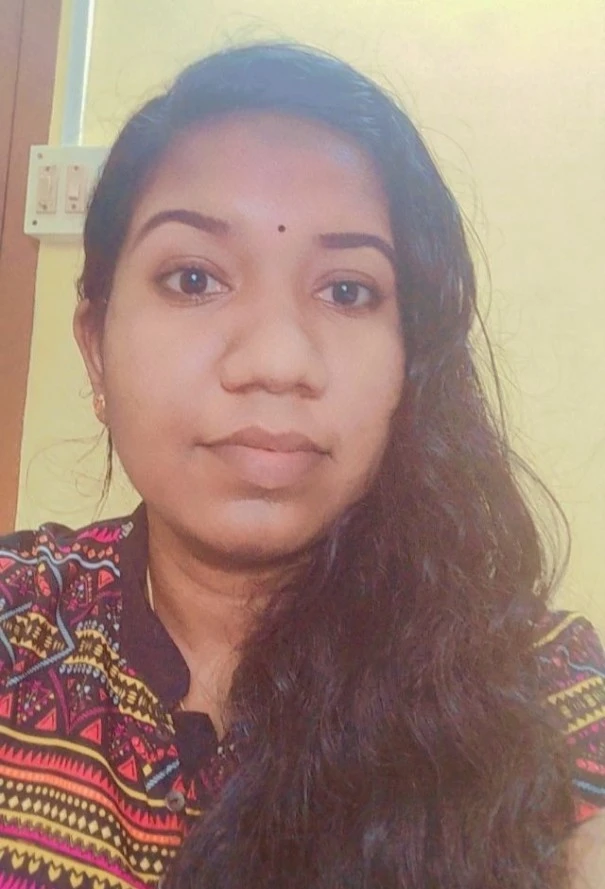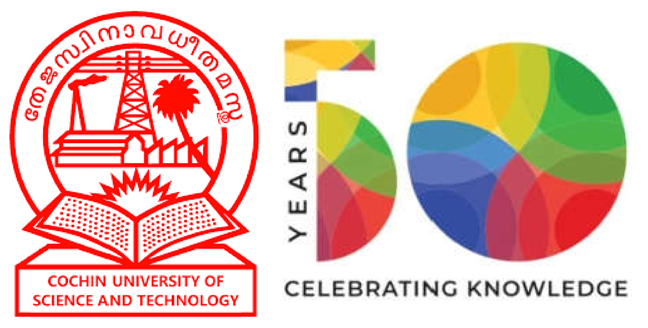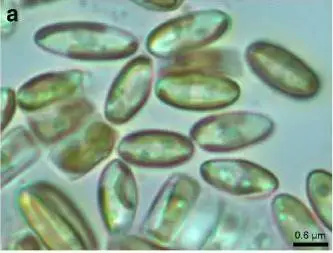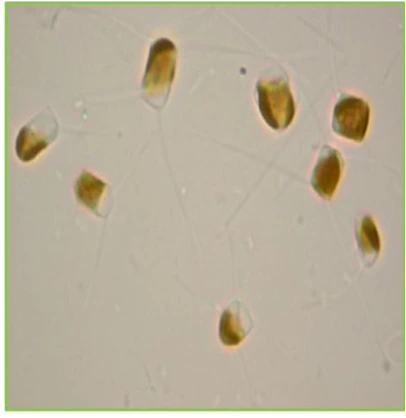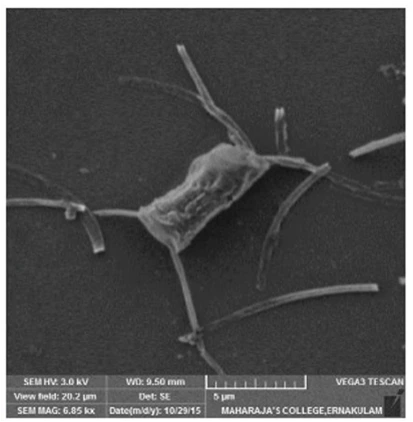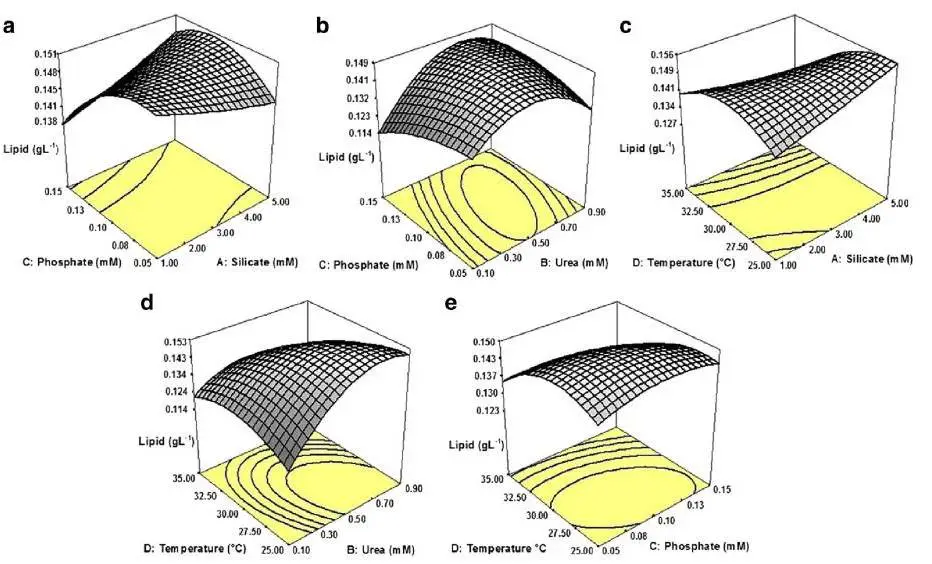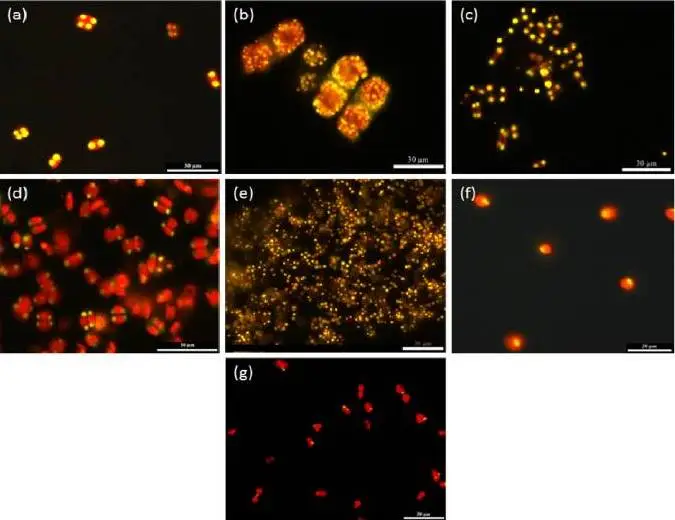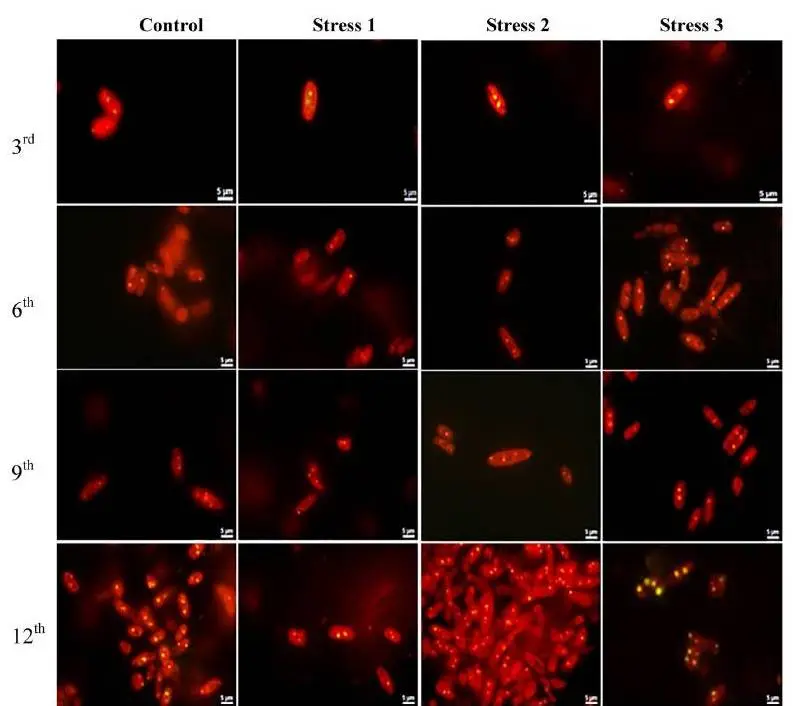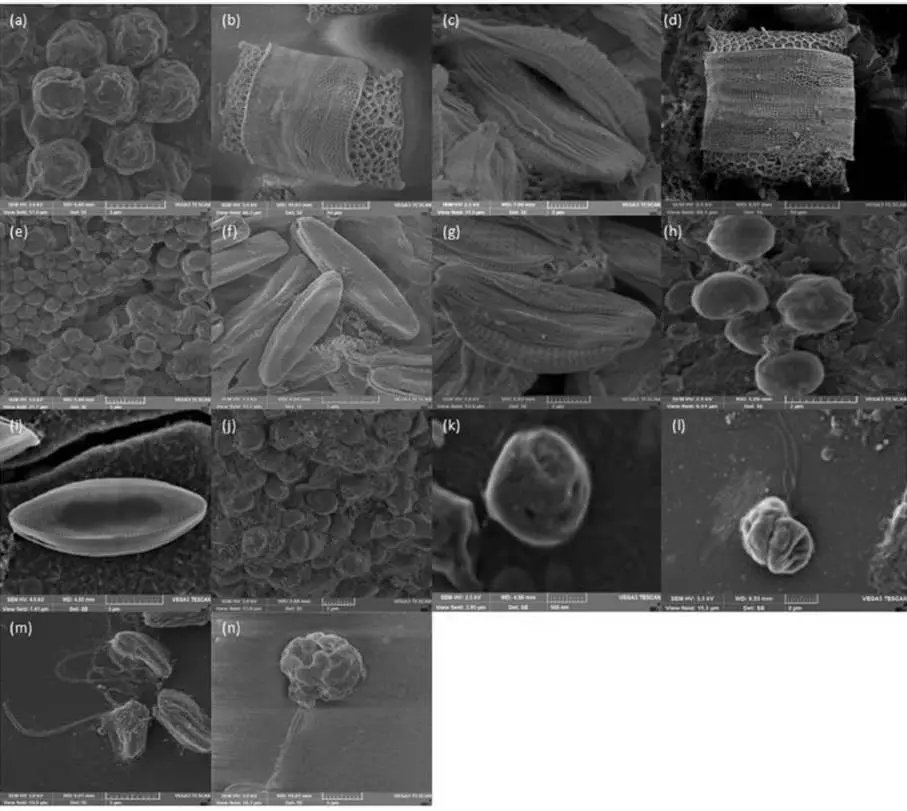- Kumaran, J., Poulose, S., Joseph, V., Bright Singh, I.S., 2021a. Enhanced biomass production and proximate composition of marine microalga Nannochloropsis oceanica by optimization of medium composition and culture conditions using response surface methodology. Anim. Feed Sci. Technol. 271, 114761. https://doi.org/10.1016/j.anifeedsci.2020.114761 view
- Kumaran, J., Singh, I.S.B., Joseph, V., 2021b. Effective biomass harvesting of marine diatom Chaetoceros muelleri by chitosan-induced flocculation, preservation of biomass, and recycling of culture medium for aquaculture feed application. J. Appl. Phycol. 33, 1605–1619. https://doi.org/10.1007/s10811-021-02369-4 view
- Leber CA, C. Benjamin Naman , Lena Keller, JehadAlmaliti, Eduardo J. E. Caro-Diaz,, EvgeniaGlukhov,, Valsamma Joseph, Sajeevan TP, Andres Joshua Reyes, Jason S. Biggs, Te Li, Ye Yuan, Shan He, Xiaojun Yan. and William H. Gerwick . 2020. Applying a Chemogeographic Strategy for Natural Product Discovery from the Marine Cyanobacterium Moorena bouillonii. Marine Drugs, 18, 515; doi:10.3390/md18100515 view
- Sabu, S., Singh, I.S.B., Joseph, V., 2019. Improved lipid production in oleaginous brackish diatom Navicula phyllepta MACC8 using two-stage cultivation approach. 3 Biotech 9, 437. https://doi.org/10.1007/s13205-019-1968-1 view
- Kumaran, J., Jose, B., Joseph, V., Bright Singh, I.S., 2017. Optimization of growth requirements of marine diatom Chaetoceros muelleri using Response Surface Methodology. Aquac. Res. 48, 1513–1524. https://doi.org/10.1111/are.12987 view
- Sabu, S., Bright Singh, I.S., Joseph, V., 2017a. Molecular Identification and Comparative Evaluation of Tropical Marine Microalgae for Biodiesel Production. Mar. Biotechnol. 19, 328–344. https://doi.org/10.1007/s10126-017-9754-8 view
- Sabu, S., Singh, I.S.B., Joseph, V., 2017b. Optimisation of critical medium components and culture conditions for enhanced biomass and lipid production in the oleaginous diatom Navicula phyllepta: a statistical approach. Environ. Sci. Pollut. Res. 24, 26763–26777. https://doi.org/10.1007/s11356-017-0274-x view
Algae are a diverse group of aquatic, photosynthetic organisms generally categorized as either macro algae (i.e, seaweed) microalgae (unicellular). As aquatic relatives of plants, microalgae thrive in aerated, liquid cultures where the cells have sufficient access to light, carbon dioxide and other nutrients. Algae are primarily photoautotrophic and few species are heterotrophic in nature. Unlike terrestrial plants, which require fertile land or irrigation, microalgae can grow in a wide range of habitats. Successful commercial utilization of microalgae has been established in the production of nutritional supplements, antioxidants, cosmetics,natural dyes and polyunsaturated fatty acids (PUFA).
Algal biotechnology refers to the application of microalgae and macro algae or their derivatives,to synthesize or modify products or processes for specific use.Nowadays, algae are universally acknowledged as sustainable producers for diverse and structurally complex bioactive compounds, with great potential for human and environmental welfares. Marine microalgae and macroalgae being a nutritionally rich source of proteins, carbohydrates, vitamins, antioxidants and polyunsaturated fatty acids are the natural food source for the larval stages of many aquaculture organisms.
However, the industrial use of these algae is hampered by the lack of knowledge on those factors which precisely control growth and reproduction. Though plant developmental biology and tissue culture technique have advanced very much, there are only few in depth studies on macro as well as microalgae. The sustainable management of seaweed aquaculture requires fundamental understanding of the underlying biological mechanisms controlling their life cycles from production of germ cells to the growth and fertility of adult organisms using diverse approaches requiring technological tools. Our research study is aimed to make a substantial contribution to closing the knowledge gap in the area of algae biotechnology.
Algal biotechnology is one of the center’s primary research focuses. The research team focusing on the biosynthesis of hydrocarbon of biofuel significance from marine algae, Scale up culture of marine microalgae for using it as aquaculture feed, isolation of quorum quenching molecules from Cyanobacteria and tissue culture of seaweeds etc.
Recent Updates
- Supplementation of marine microalgal species to ornamental fishes resulted in increased growth, immunity, and pigment content.
- New economically feasible Soya bean meal medium for Bacillus cereus, a probiotic for aquaculture has been found with higher activity of hydrolytic enzymes.
- Optimisation of hydrocarbon production in the most potent producer Psammodictyon panduriforme
- Development of new species of microalgae for shellfish and finfish culture
- High-density microalgal biomass production in an indigenously developed photobioreactor
Research Projects
- Cell and developmental biology of Marine organisms funded by Department of Biotechnology, Govt of India
- Nutritional evaluation, segregation and production optimization of novel marine microalgae for establishment as live feeds in fish and shellfish culture funded by Department of Biotechnology, Govt of India
- Indo-US initiatives on innovative reforms in marine biotechnology education and research and development of sustainable aquaculture production systems for inclusive economic growth and sustainable development funded by University Grants Commission, Govt. of India (under the Indo-US 21st Century Knowledge Initiative)
- Structure and biosynthetic pathway elucidation of high value hydrocarbons from the brown seaweed Zonaria species for potential biofuel applications (as part of Raman Postdoctoral Fellowship) funded by University Grants Commission (Raman PDF)
- Optimization of neutral lipid and biomass production by marine microalgae and expression pattern of the key genes in neutral lipid biosynthesis funded by University Grants Commission, Government of India, New Delhi
- Development of photobioreactors for mass production of marine microalgae as live feed in aquaculture systems funded by Kerala Biotechnology Commission, Kerala State Council for Science, Technology and Environment, Kerala, India
Research Publications
- Saranya M. Valsamma Joseph (2022) Presented a paper on Marine benthic cyanobacteria Leptolynbya sp.MACC32 with quorum quenching activity against pathogenic V. harveyi in the golden jubilee International online conference- Biotech spectrum 2022.
- Thasreefa. K, I. S. Bright Singh, V. Joseph, 2022. Growth Performance and Survival of Guppy (Poecilia reticulata) in response to Chitosan Flocculated Marine Microalga Picochlorum maculatum MACC3 Supplemented Diets, 34th Kerala Science Congress, Thiruvananthapuram, 10-12, February 2022, p. 317.
- Soumya S. Prakash, Mary Jincy P. J, K. Thasreefa, Sajeevan T. P., I. S. Bright Singh,Valsamma Joseph, 2022. Effect of Nutritionally Rich Microalgal Species on Growth,Survival and Reproduction of Copepod Oithona rigida, 34th Kerala Science Congress,conducted by KSCSTE, Thiruvananthapuram, 10-12, February 2022, p. 369.
- Indira.K, Valsamma Joseph (2022) Screening of marine diatoms for hydrocarbons ofbiofuel significance. Proceedings of 34th Kerala Science Congress conducted by KSCSTE (09-07),10-12 February 2022 p361
- K. Indira, Valsamma Joseph (2022) Benthic diatom Psammodictyon panduriforme isolated from the west coast of India a potent hydrocarbon producer of biofuel significance.International conference on ADVANCED BIOLOGY conducted by Inter University Centre for Evolutionary and Integrative Biology, University of Kerala, Kariavattom, Trivandrum (04-59),22-25 February2022p93
- Jisha Kumaran (2020) Production of Chaetoceros muelleri and Nannochloropsis oceanica in an indigenously developed vertical flat panel photobioreactor for integrating to aquaculture
- Sanyo Sabu 2017. Optimization of neutral lipid and biomass production by marine microalgae and expression pattern of the key genes in neutral lipid biosynthesis. view view
- Deepa G. D. 2017 Cyano bacterial probiotics MCCB114 and 115: Their identification, heterotrophic bacterial association and ecological significance view
- Arun Augustine. 2015. Polyunsaturated Fatty acid production in marine microalga Picochlorum maculatum. view
Focus Areas
- Structure and Biosynthesis of hydrocarbon of biofuel significance in Marine algae
- Quorum quenching molecules from Marine cyanobacteria against Vibrio harveyi for application in aquaculture
- Production of marine microalga Picochlorum maculatum MACC3 based feed for aquaculture nutrition
- Marine microalgal biomass production in indigenous photobioreactor: kinetic modeling and downstream processing.
- Developmental biology of marine macroalgae Sargassum wightii at molecular level and identification of growth factors and microbiome for application in micro-propagation.
Collaborating Institutes
Scripps Institution of Oceanography C Abdul Hakeem College Bharathidasan UniversityOur Team
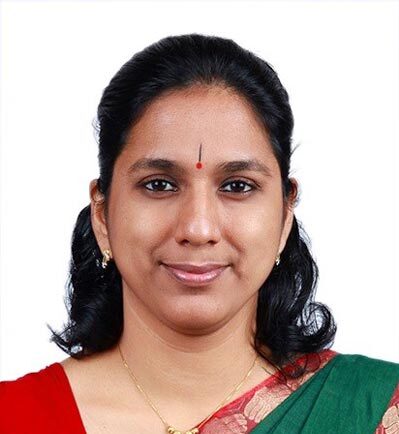
Prof. Valsamma Joseph
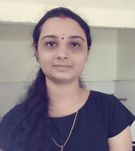
Saranya M.
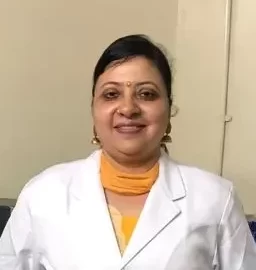
Indira K.
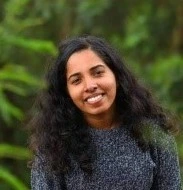
Thasreefa K.
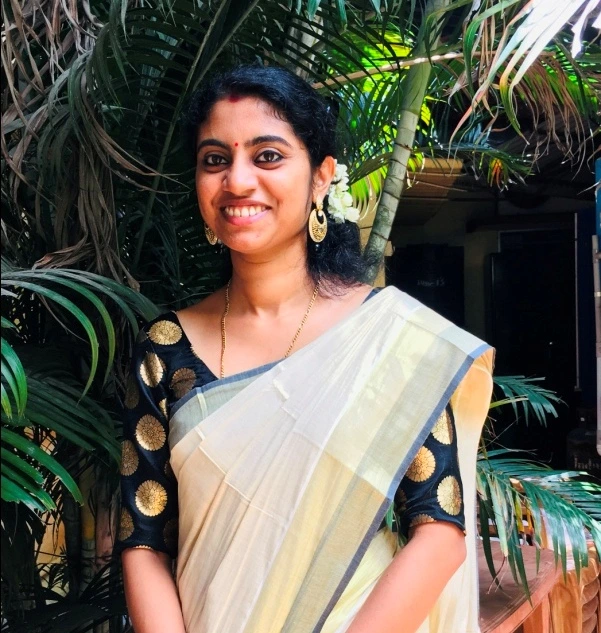
Soumya S. Prakash
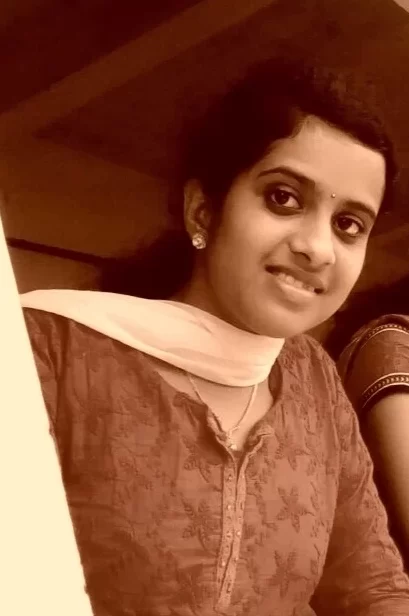
Chithira M. S.
